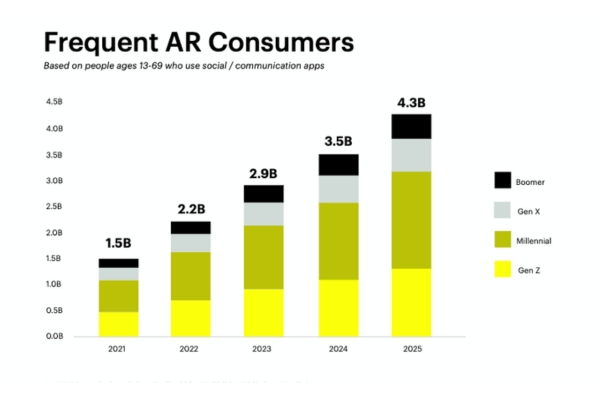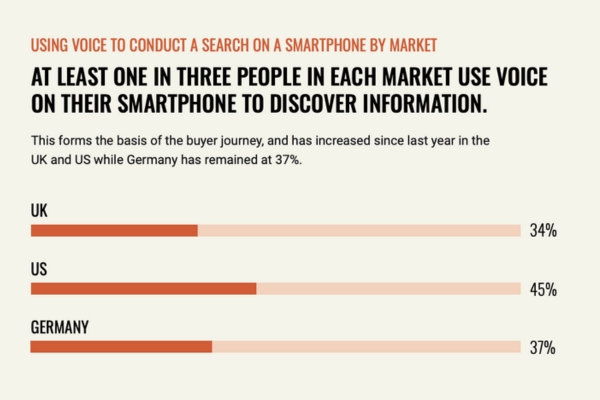Are you struggling to find new ways to bring customers to your startup?
With so many businesses fighting for attention, it’s easy to feel like the usual marketing channels aren’t enough. But what if there were lesser-known ways that could give your startup a real edge?
In 2025, startups are tapping into hidden customer acquisition channels that don’t always make headlines. These unconventional paths are helping them reach new audiences in smarter ways.
For instance, companies that use influencer marketing report an engagement rate of 4.2%, which is much higher than traditional advertising.
This highlights how effective a lesser-known marketing channel can be for companies.

These channels often go beyond traditional ads, focusing on community building, exclusive partnerships, and viral trends. Startups are not just spending more, they are spending more strategically.
The result? Lower customer acquisition costs and better retention rates.
Curious to know what these channels are and how they could benefit your business? Let’s explore these hidden gems.
1. 5 Emerging Customer Acquisition Channels
Here are five emerging customer acquisition channels that you can use to lower your acquisition cost and get better retention rates.
1.1. Micro-Influencer Partnerships
Micro-influencers might not have millions of followers, but their audience is engaged and trusts them. The trick lies in finding influencers who resonate with your brand’s personality.
Interesting fact, 47.3% of the influencers fall under the micro-influencer category.
Instead of focusing solely on follower numbers, look for people whose content naturally aligns with your product. Tools like BuzzSumo or simply scanning relevant hashtags on Instagram or TikTok can help you spot them.
For example, if you’re a sustainable fashion startup, a micro-influencer posting eco-friendly fashion hauls can be a perfect fit. The goal is to match your product with influencers who already speak to your ideal customers.
Building Partnerships That Work for Everyone
Great partnerships are built on mutual value. Influencers prefer collaborations that feel authentic to their followers and add meaning to their content. Rather than just offering free products, think creatively.
Offer affiliate links, exclusive deals, or early access to new collections. Some brands even invite influencers to co-create products or feature them in special campaigns, building deeper trust and long-term relationships.

Measuring ROI on Micro-Influencer Campaigns
Measuring the impact of influencer campaigns ensures your efforts are well-placed. Before launching, decide what you want to achieve, whether it’s boosting sales, increasing website traffic, or building brand awareness.
Assign influencers unique discount codes or trackable links to see how many customers they send your way. Keep an eye on engagement metrics like comments, shares, and saves, which reflect audience interest.
For every $1 spent on influencer marketing, businesses make an average of $6.50.
Tools like Google Analytics or Shopify’s tracking can give deeper insights into the campaign’s performance. In the end, the goal is to see if the sales or leads generated outweigh what you invested in the partnership.
1.2. Community-Driven Growth
An online community can be one of the most valuable assets for your startup. Start by finding where your audience naturally gathers, this could be platforms like Reddit, Discord, Facebook Groups, or even Slack channels.
The key is to create a space where people can engage, share ideas, and feel connected to your brand’s values. Instead of being overly promotional, offer helpful content, start meaningful conversations, and respond actively to questions. Over time, a strong sense of belonging develops and encourages members to stick around and invite others.
Power of User-Generated Content (UGC)
User-generated content is like free advertising with a personal touch. When customers post about their experiences with your product, it builds trust and credibility. Encourage users to share their stories by creating contests, hashtags, or challenges.
For instance, a skincare startup could run a “30-Day Glow-Up” challenge, prompting customers to share before-and-after photos. Reposting UGC on your brand’s page not only strengthens your relationship with existing customers but also attracts new ones who see real people benefiting from your products.

Turn Community Members into Brand Ambassadors
Some of your most loyal community members can become your greatest advocates. These individuals are already excited about your brand, turning them into ambassadors amplifies that excitement.
Offer special perks like discounts, early access to products, or exclusive swag in exchange for their support. Encourage them to share their positive experiences on social media and recommend your brand to friends.
Ambassador programs work best when there’s genuine alignment; people are more likely to promote products they love. Over time, these ambassadors become the voice of your brand, helping you grow organically through word-of-mouth.
1.3. Interactive Content Marketing
Interactive quizzes and assessments are a great way to attract attention and keep people hooked. They don’t just entertain, they provide personalized insights, making users feel more connected to your brand.
For example, an online fitness brand could offer a “What’s Your Ideal Workout?” quiz, helping visitors find fitness plans according to their goals. Platforms like Typeform and Interact make it easy to create these experiences.
The added benefit? You can collect valuable data about your audience’s preferences and use it to personalize future marketing efforts.
You can also use Carousels instead of Instagram reels, as they bring in three times more engagement.
Building Interactive Product Demos That Convert
Static product descriptions are quickly becoming outdated. Interactive demos give potential customers a hands-on feel for your product, even before they buy. Think of it as a try-before-you-buy experience in the digital world.
For SaaS products, this could mean interactive walkthroughs of key features. For physical products, 360-degree product views let customers explore every detail. The goal is to let users experience the value of your product in real time, creating trust and excitement that boosts conversion rates.
Creating Immersive AR/VR Experiences
Augmented Reality (AR) and Virtual Reality (VR) are transforming how people shop and engage with brands. AR lets customers visualize products in their own space, like seeing how a couch would fit in their living room through a phone app.
VR, on the other hand, can offer fully immersive experiences, such as virtual store tours or product showcases. These technologies not only provide a unique experience but also reduce hesitation by giving customers a clear idea of what to expect. This builds confidence and drives faster purchasing decisions.
In a recent survey, 71% of the respondents said that they would buy from a brand more if they offered personalized AR experience.

1.4. Voice Search Optimization
Voice search behavior is different from traditional text-based searches. When people speak to devices like Alexa, Google Assistant, or Siri, they tend to use natural, conversational language.
Instead of typing “best pizza near me,” they might ask, “Where’s the best place to get pizza around here?” Most voice searches are also question-based, focusing on local, immediate needs.
According to a report, 45% of the people living in the U.S. use voice search on their smartphone to find information on the web.

Optimizing Content for Voice Queries
Optimizing content for voice search requires a shift from keyword-heavy strategies to more natural language. Focus on answering specific questions clearly and concisely. Use headings in a Q&A format, like “What’s the best way to clean white sneakers?” or “How long does it take to bake a cake?”
Voice search algorithms often pull answers from featured snippets, so aim to create content that directly addresses common questions. Additionally, optimize for local SEO by including relevant location-based keywords since many voice searches are location-focused, like “coffee shop near me.”
Creating Voice Apps and Skills
Developing voice apps or skills can give your startup a unique edge. These apps are designed to enhance interactions with voice assistants. For example, a food delivery service could create an Alexa skill allowing customers to reorder their favorite meals through voice commands.
Or a fitness startup could offer daily workout tips via Google Assistant. Voice apps not only make it easier for users to engage with your brand but also increase convenience and brand recall. Platforms like Alexa Skills Kit and Google Actions make it simple to build voice-enabled experiences.

1.5. Partnering with Complementary Startups
Partnering with other startups that offer complementary – not competing – products or services is a hidden strategy many overlook. These partnerships allow both brands to tap into each other’s customer base without spending on expensive ads.
Around 90% of the startups fail, highlighting the importance of collaboration with other brands in the initial stages.
For example, if you run a meal-kit delivery service, teaming up with a kitchenware startup can be mutually beneficial. The goal is to find businesses whose customers are likely to be interested in your product and vice versa. A tool like LinkedIn or industry-specific directories can help identify potential partners within your niche.
Creating Cross-Promotional Campaigns
Once you’ve identified a complementary startup, brainstorm creative ways to promote each other. Cross-promotions can take many forms, bundled product offers, co-branded newsletters, or even social media giveaways.
For instance, you could offer a discount code to your partner’s customers and receive the same in return. Another option is to co-host webinars or events, giving both brands a chance to showcase their offerings to an engaged audience.
Measuring Results and Strengthening Partnerships
To make sure the partnership yields results, establish clear goals from the start, whether that’s gaining new subscribers, driving traffic, or increasing sales. Use referral links or UTM codes to track which new customers came through your partner’s audience.
Keep an eye on metrics like sign-ups, clicks, and conversion rates to assess the impact of the campaign. If the collaboration works well, consider evolving the partnership into a long-term arrangement or exploring new ways to engage each other’s customers.
| Partner Type | Example | Benefit |
| Cross-Promotional Discounts | Meal kits and kitchenware | Expands audience reach |
| Co-hosted Webinars | Joint industry discussions | Builds credibility and engagement |
| Bundled Offers | Product Pairings | Increases perceived value and convenience |
If you want to explore more about the topic, click here to read the real-life case studies of companies that used hidden customer acquisition channels to gain more customers and become more successful.
2. Implementation Strategies for Hidden Customer Acquisition Channels
Here’s how you can implement the said strategies with ease:
2.1. Assessing Channel Fit for Your Startup
Choosing the right channel starts with understanding your audience. Where do they spend their time? If you target fitness enthusiasts, social media platforms like Instagram or TikTok might be a good fit.
For accounts over 100,000 followers, TikTok has an engagement rate of 5.3% while Instagram has an engagement rate of 1.1%.
If your customers are business professionals, LinkedIn or partnerships with complementary startups could be more effective.
It’s also helpful to observe your competitors. Are they using a particular channel successfully? If so, consider testing it. Alternatively, explore underutilized channels where competition is low. The key is to select a channel that matches both your target audience and your startup’s strengths.

2.2. Allocating Resources Effectively
You don’t need a huge budget to succeed with hidden acquisition channels, but smart planning is important. Start by setting clear goals, such as increasing website traffic by 20% or gaining 5,000 new followers in three months. These goals will help you decide how much time and money to assign to each activity.
Focus your efforts on channels with the highest potential impact. For example, if micro-influencers show strong results in your industry, allocate more resources to them. At the same time, experiment with smaller initiatives to see if new channels have promise.
| Goal | Suggested Channel | Allocation % | Expected ROI |
| Increase website traffic | Content Marketing and SEO | 30% | 4x to 6x |
| Build brand awareness | Micro-influencers | 40% | $6.50 per $1 |
| Increase sales | Voice Search Optimization | 20% | High for local |
| Experimentation | Emerging Channels | 10% | Variable |
2.3. Measuring Success and Iterating Quickly
Tracking progress is key to making the right adjustments along the way. Define clear metrics for success. For example, you can measure engagement through likes and shares for interactive content, or track sales generated from voice orders.
If a strategy isn’t delivering results, adjust it quickly. Running small experiments like A/B tests can also show you which ideas resonate best with your audience. Learn from what works, tweak what doesn’t, and keep iterating until you find the right approach.
| Channel | Primary Metric | Success Indicator |
| Micro-influencers | Engagement Rate | 5-7x higher than macro-influencers |
| Interactive Content | Time on Page | 2-3 minutes or higher |
| Voice Search Optimization | Conversion Rate | 25-30% for local search queries |
| Partnerships | Lead Generation | 10-15% increase with collaboration |
3. How Kyanon Digital Supports Innovative Customer Acquisition
Here’s how Kyanon Digital supports different and unique customer acquisition channels and help you grow your business:
3.1. Expertise in Developing Interactive Content and Apps
Kyanon Digital is a leading tech company specializing in mobile app development, low-code platforms, and digital solutions. Their expertise allows businesses to engage customers through customized applications and interactive content.
For example, they created a loyalty app for a global coffee chain, replacing physical cards with a digital platform that tracks rewards, promotions, and store locations. This shift not only simplified the customer experience but also boosted engagement by making information and services easily accessible through the app.
3.2. Data Analysis for Identifying Effective Channels
Kyanon Digital helps companies leverage data to pinpoint which acquisition channels are most effective. They integrate analytics tools into their platforms, enabling clients to track user engagement, behaviors, and trends.
This data-driven approach ensures businesses allocate their resources toward channels that generate the highest returns. In projects like their loyalty and e-commerce platforms, Kyanon’s integration of analytics allowed businesses to identify and maximize high-performing customer touchpoints.
3.3. Agile Development for Rapid Testing and Iteration
Agility is a core part of Kyanon Digital’s development process. Their use of Agile frameworks enables rapid prototyping, testing, and refining of solutions based on customer feedback.
This approach ensures that apps and platforms evolve quickly to meet changing user needs and market trends. Whether building MVPs (Minimum Viable Products) or scaling full-featured applications, Kyanon Digital ensures that businesses can iterate quickly without sacrificing quality or security.
Conclusion
In 2025, startups are succeeding by using smart strategies like micro-influencers, interactive content, voice search, and community-building. These channels help them connect with customers in meaningful ways without spending heavily on ads. The key is finding the right channels, tracking results, and staying flexible to adjust quickly.
If your business needs support, Kyanon Digital can help. With expertise in building apps, using data to find the best channels, and working with agile methods, they make it easy for startups to grow smarter and faster.
So, are you ready to enhance your customer acquisition strategy? Connect with Kyanon Digital today and explore how we can help your startup grow smarter and faster.


